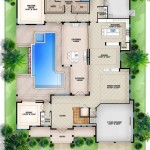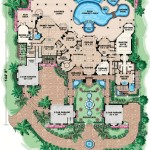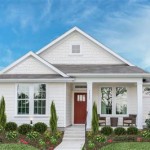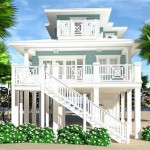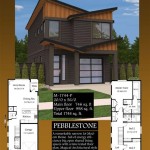Bat house plans DIY involve creating blueprints or guidelines for constructing a bat house, a structure specifically designed to provide shelter and roosting space for bats. These plans typically include detailed instructions, materials lists, and diagrams to facilitate the construction process. By following DIY bat house plans, individuals can build and install bat houses in their gardens or other outdoor spaces to attract and support bat populations.
Many species of bats serve as beneficial predators of insects, consuming large numbers of mosquitoes, beetles, and other pests. Establishing bat houses in appropriate locations can encourage bats to inhabit and forage in an area, providing natural pest control and reducing the need for chemical insecticides. Moreover, some bat species serve as pollinators for certain plants, contributing to the local ecosystem’s biodiversity and ecological balance.
In this article, we will explore the essential elements of bat house plans DIY, providing step-by-step guidance, materials recommendations, and tips for successful bat house construction and installation. By understanding the preferences and habitat requirements of bats, we can effectively create bat-friendly structures that promote their well-being and contribute to the health of our ecosystems.
When embarking on a bat house plans DIY project, it’s crucial to consider the following key points:
- Appropriate size: 2-3 feet tall, 12-15 inches wide, and 3-4 inches deep.
- Multiple chambers: Allow for different bat species and colony sizes.
- Rough interior: Provide grip for bats to climb and roost.
- Dark interior: Create a sheltered and secure environment.
- 1.5-inch entrance slot: Accommodate most bat species.
- South-facing placement: Maximize sun exposure for warmth.
- 10-15 feet above ground: Provide a clear flight path.
- Sturdy materials: Ensure durability and longevity.
- Proper ventilation: Prevent moisture buildup.
Adhering to these guidelines will enhance the effectiveness and longevity of your bat house, creating a welcoming habitat for these beneficial creatures.
Appropriate size: 2-3 feet tall, 12-15 inches wide, and 3-4 inches deep.
The dimensions of a bat house are crucial for attracting and accommodating bats. The optimal size for a bat house is 2-3 feet tall, 12-15 inches wide, and 3-4 inches deep. This size provides sufficient space for bats to roost comfortably, raise their young, and maneuver within the house.
The height of the bat house allows for proper air circulation and temperature regulation. Bats prefer warm environments, and the height of the house ensures that they can move up and down to adjust their body temperature. The width of the house accommodates multiple bats, as they often roost together in colonies. The depth of the house provides enough space for bats to hang upside down without touching the back of the house.
It’s important to note that different bat species have varying size preferences. Smaller species, such as the little brown bat, may prefer houses that are closer to 2 feet tall and 12 inches wide, while larger species, such as the evening bat, may need houses that are closer to 3 feet tall and 15 inches wide. Considering the potential species in your area when choosing the dimensions of your bat house is important.
By providing a bat house with appropriate dimensions, you increase the likelihood of attracting bats to your property and providing them with a suitable habitat to thrive.
Multiple chambers: Allow for different bat species and colony sizes.
Incorporating multiple chambers into a bat house design is essential for several reasons. Firstly, different bat species have varying roosting preferences and may require different chamber sizes and configurations. For instance, some species prefer larger chambers with ample space to move around, while others prefer smaller, more enclosed spaces. By providing multiple chambers, you increase the chances of attracting a wider range of bat species to your property.
- Accommodating colony sizes: Bats often roost in colonies, and the size of the colony can vary depending on the species and environmental conditions. Multiple chambers allow for flexibility in accommodating different colony sizes. During peak season, when colonies are larger, bats can utilize multiple chambers, while during off-season or when colony sizes are smaller, they can roost in a single chamber.
- Providing options for roosting behavior: Different bat species and even individuals within the same species may have different roosting preferences. Some bats prefer to roost in warm, sunny chambers, while others prefer cooler, shady chambers. Multiple chambers with varying orientations and exposure to sunlight allow bats to choose the microclimate that best suits their needs.
- Enhancing social dynamics: In some bat species, social interactions and communication are important aspects of their behavior. Multiple chambers provide spaces for bats to interact, groom each other, and engage in other social behaviors that contribute to the well-being of the colony.
- Increasing the overall capacity of the bat house: Multiple chambers effectively increase the capacity of the bat house, allowing it to support a larger population of bats. This is particularly beneficial in areas where bat populations are declining or where there is a high demand for roosting spaces.
By providing multiple chambers in your bat house design, you create a more versatile and adaptable structure that meets the diverse needs of different bat species and colony sizes, ultimately enhancing the likelihood of successful bat habitation.
Rough interior: Provide grip for bats to climb and roost.
The interior surface of a bat house should be rough to provide bats with a secure grip for climbing and roosting. A smooth interior can be slippery, making it difficult for bats to hold on, especially when they are carrying their young. Providing a rough surface allows bats to cling more easily and securely, reducing the risk of falls and injuries.
- Climbing: Bats use their claws and feet to climb the interior walls of the bat house to reach their roosting chamber. A rough surface provides them with the necessary friction to climb efficiently, especially when carrying their young or when the bat house is wet or humid.
- Roosting: Bats hang upside down from the ceiling of the roosting chamber using their feet. A rough surface provides them with a secure grip, allowing them to maintain their position for extended periods without slipping or falling. This is particularly important for nursing mothers, who need to be able to hold on securely while nursing their young.
- Grooming: Bats use their tongues and claws to groom themselves and remove parasites. A rough surface provides them with a surface to rub against, which aids in removing dirt, debris, and ectoparasites from their fur.
- Hibernation: During hibernation, bats enter a state of torpor, where their body temperature drops and their metabolic rate slows down. A rough surface provides them with a secure grip, allowing them to remain in a suspended position for extended periods without falling.
By providing a rough interior surface in your bat house design, you create a more suitable and secure environment for to climb, roost, groom, and hibernate, increasing the likelihood of successful bat habitation.
Dark interior: Create a sheltered and secure environment.
Bats prefer dark, enclosed spaces for roosting, as they provide a sense of security and protection from predators and inclement weather. A dark interior creates a sheltered and secure environment that meets the specific needs of bats and enhances their overall well-being.
- Protection from predators: Bats are vulnerable to predation by birds, snakes, and other animals. A dark interior reduces the visibility of bats within the bat house, making them less susceptible to detection and predation. This is especially important for nursing mothers and young bats, who are more vulnerable to attack.
- Protection from the elements: Bats need a dry, draft-free environment to roost in. A dark interior helps to maintain a stable temperature and humidity level within the bat house, protecting bats from extreme weather conditions. This is particularly important during hibernation, when bats are more susceptible to cold and dehydration.
- Reduced stress levels: Bats are sensitive to light and can be easily disturbed by bright lights. A dark interior creates a calming and stress-free environment, which is essential for bats to rest, roost, and raise their young. Reduced stress levels contribute to the overall health and well-being of bats.
- Enhanced sense of security: Bats rely on echolocation to navigate and find prey. However, bright lights can interfere with their echolocation abilities. A dark interior minimizes light interference, allowing bats to use echolocation effectively and feel more secure within the bat house.
By providing a dark interior in your bat house design, you create a more sheltered, secure, and stress-free environment that meets the specific needs of bats and enhances their overall well-being.
In addition to the benefits listed above, a dark interior can also help to prevent the growth of mold and mildew within the bat house. These organisms can thrive in moist, humid environments and can be harmful to bats. A dark interior helps to reduce moisture levels and inhibit the growth of mold and mildew, creating a healthier environment for bats.
1.5-inch entrance slot: Accommodate most bat species.
The size of the entrance slot is a crucial factor in the design of a bat house, as it determines which bat species can access and utilize the structure. A 1.5-inch entrance slot is considered the optimal size for accommodating the majority of bat species in North America.
- Suitable for most species: A 1.5-inch entrance slot is large enough to allow most bat species to enter the bat house, including little brown bats, big brown bats, and evening bats, which are common species in many regions.
- Prevents larger animals from entering: While a 1.5-inch entrance slot is large enough for most bats, it is too small for larger animals, such as birds, squirrels, and raccoons, to enter the bat house. This helps to prevent these animals from disturbing or harming the bats.
- Reduces drafts: A smaller entrance slot helps to reduce drafts and air currents within the bat house, creating a more stable and comfortable environment for bats.
- Prevents light penetration: A smaller entrance slot also helps to reduce light penetration into the bat house, creating a darker and more secure environment for bats.
By incorporating a 1.5-inch entrance slot into your bat house design, you can effectively accommodate a wide range of bat species while preventing larger animals from entering and maintaining a suitable environment within the bat house.
South-facing placement: Maximize sun exposure for warmth.
The placement of a bat house is crucial for its effectiveness in attracting and supporting bat populations. Proper placement ensures that bats can easily access the house, find suitable roosting conditions, and benefit from natural elements such as sunlight and warmth.
**Maximize sun exposure for warmth:** Bats are warm-blooded mammals and rely on external heat sources to maintain their body temperature, especially during the night and in cooler climates. Placing a bat house in a south-facing location allows it to receive maximum exposure to sunlight throughout the day. The sunlight heats the interior of the house, creating a warm and inviting environment for bats to roost and raise their young. South-facing placement is particularly important in regions with colder climates, as it helps to ensure that the bat house remains warm enough for bats to survive and thrive.
**Protection from prevailing winds:** In addition to providing warmth, a south-facing placement also offers protection from prevailing winds. Bats are sensitive to drafts and cold winds, which can make it difficult for them to maintain their body temperature. Placing the bat house in a location that is sheltered from strong winds helps to create a more comfortable and protected environment for the bats.
**Clear flight path:** When choosing a location for a bat house, it is important to ensure that there is a clear flight path for bats to enter and exit the house. Avoid placing the house near obstacles or in areas with dense vegetation, as this can make it difficult for bats to navigate and access the house. A clear flight path also allows bats to take off and land safely, reducing the risk of collisions and injuries.
10-15 feet above ground: Provide a clear flight path.
The height at which a bat house is placed is crucial for its effectiveness and the well-being of its inhabitants. Mounting the bat house 10-15 feet above the ground provides several advantages that support bat activity and successful roosting:
**Unobstructed flight path:** Placing the bat house at an appropriate height ensures that bats have a clear and unobstructed flight path to and from the entrance. This is especially important for bats emerging from the house at dusk to forage for insects. A clear flight path allows bats to take off and land safely, reducing the risk of collisions with obstacles or the ground.
**Improved visibility:** Mounting the bat house higher above the ground makes it more visible to bats from a distance. Bats use echolocation to navigate, but they can also rely on visual cues to locate suitable roosting sites. A well-positioned bat house that is easily visible from afar increases the chances of attracting bats to the structure.
**Protection from predators:** Elevating the bat house 10-15 feet above the ground provides a level of protection from potential predators, such as snakes, cats, and raccoons. These predators may be less likely to climb to such heights, reducing the risk of disturbance or harm to the bats.
**Reduced exposure to ground-level disturbances:** Placing the bat house higher above the ground minimizes the impact of ground-level activities and disturbances on the bats. Human activity, noise, and vibrations from lawn mowers or other equipment can be disruptive to bats, particularly during sensitive periods such as roosting and raising young.
Sturdy materials: Ensure durability and longevity.
The materials used in the construction of a bat house play a vital role in its durability and longevity. Selecting sturdy and weather-resistant materials is essential to ensure that the bat house can withstand various environmental conditions and provide a safe and stable shelter for bats over an extended period.
- Pressure-treated wood: Pressure-treated wood undergoes a process where preservatives are forced into the wood under pressure, making it resistant to rot, decay, and insect damage. It is an excellent choice for bat house construction as it can withstand moisture and harsh weather conditions, ensuring the longevity of the structure.
- Cedar or redwood: Cedar and redwood are naturally rot-resistant and durable woods that are suitable for outdoor use. They contain natural oils that repel insects and moisture, making them ideal for bat house construction. Cedar and redwood bat houses can last for many years with minimal maintenance.
- Plastic or vinyl: Plastic and vinyl are durable, weather-resistant materials that are not susceptible to rot or decay. They are easy to clean and maintain, and they can withstand extreme temperatures and moisture. Plastic or vinyl bat houses are a good choice for areas with harsh climates or heavy precipitation.
- Metal: Metal bat houses are highly durable and can withstand extreme weather conditions. However, it is important to choose a metal that is resistant to rust and corrosion, such as galvanized steel or aluminum. Metal bat houses may require additional insulation to regulate temperature fluctuations.
By using sturdy and durable materials in the construction of a bat house, you can ensure that it will provide a safe and long-lasting shelter for bats, contributing to the well-being of these beneficial creatures.
Proper ventilation: Prevent moisture buildup.
Adequate ventilation is crucial in bat house design to prevent moisture buildup and maintain a healthy environment for bats. Moisture can accumulate inside a bat house due to condensation, rain, or bat activity, leading to mold growth, rot, and poor air quality. Proper ventilation allows for air circulation, reduces humidity levels, and prevents the accumulation of moisture.
To ensure proper ventilation, incorporate the following strategies into your bat house design:
- Ventilation slots: Install ventilation slots or holes near the top of the bat house, on opposite sides, to create cross-ventilation. These slots allow air to enter and circulate through the house, carrying away moisture and stale air.
- Gable roof: A gable roof design promotes air circulation by allowing warm, moist air to escape through the peak of the roof. This type of roof also prevents water from pooling on the top of the house.
- Drainage holes: Drill small drainage holes in the floor of the bat house to allow any accumulated moisture to drain out. These holes should be small enough to prevent bats from escaping but large enough to drain excess water.
- Avoid overcrowding: Overcrowding can lead to increased moisture production and poor air quality. Ensure that the bat house is the appropriate size for the expected bat population and provides enough space for bats to move around comfortably.
By incorporating proper ventilation into your bat house design, you can create a healthy and comfortable environment for bats, promoting their well-being and longevity.
In addition to the strategies mentioned above, consider the following tips to further enhance ventilation in your bat house:
- Avoid painting the interior: Paint can seal the wood and prevent moisture from escaping.
- Use a light-colored exterior paint: Dark colors absorb more heat, which can increase moisture production inside the house.
- Install the bat house in a well-ventilated area: Avoid placing the bat house in areas with poor air circulation or where it may be blocked by vegetation.
By following these guidelines, you can create a bat house that provides a healthy and well-ventilated environment for its inhabitants.
:max_bytes(150000):strip_icc()/thriftdiving-dc54753bf8974c088317fad2ce521ca4.jpg)








Related Posts


